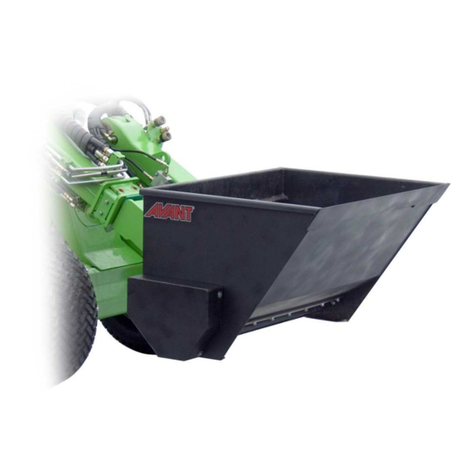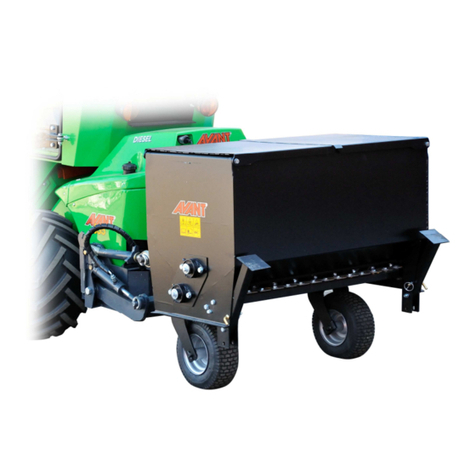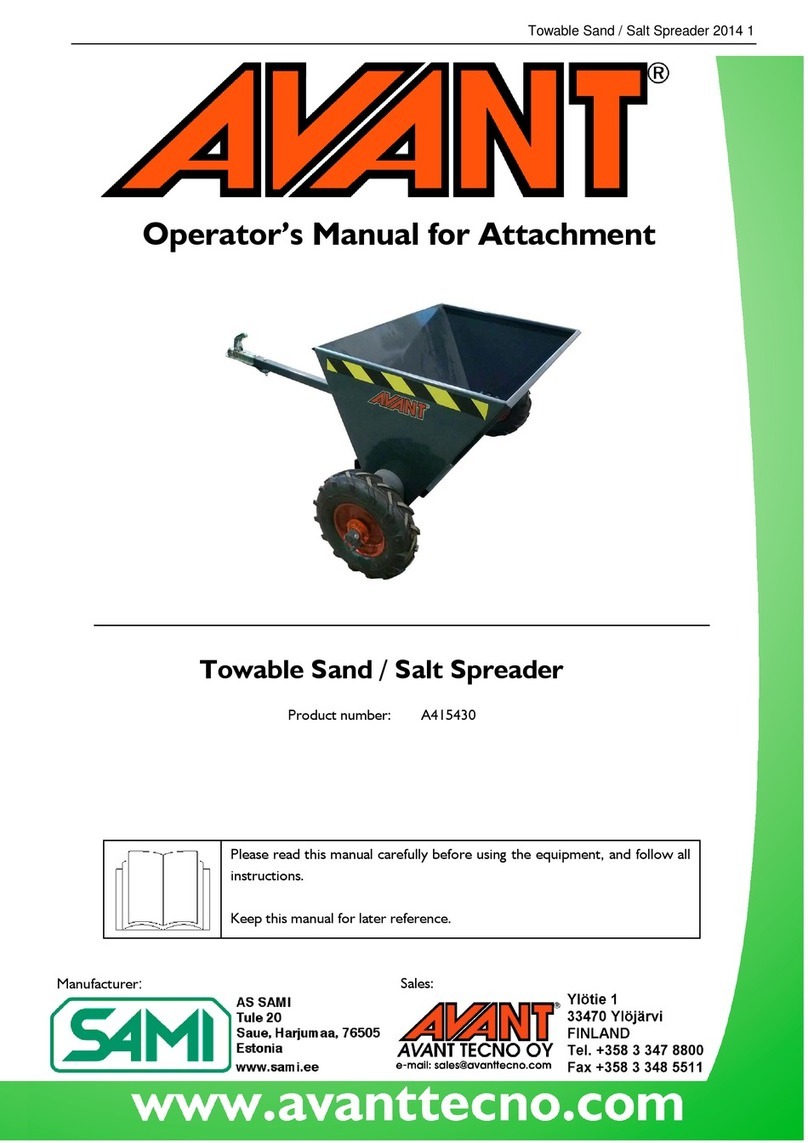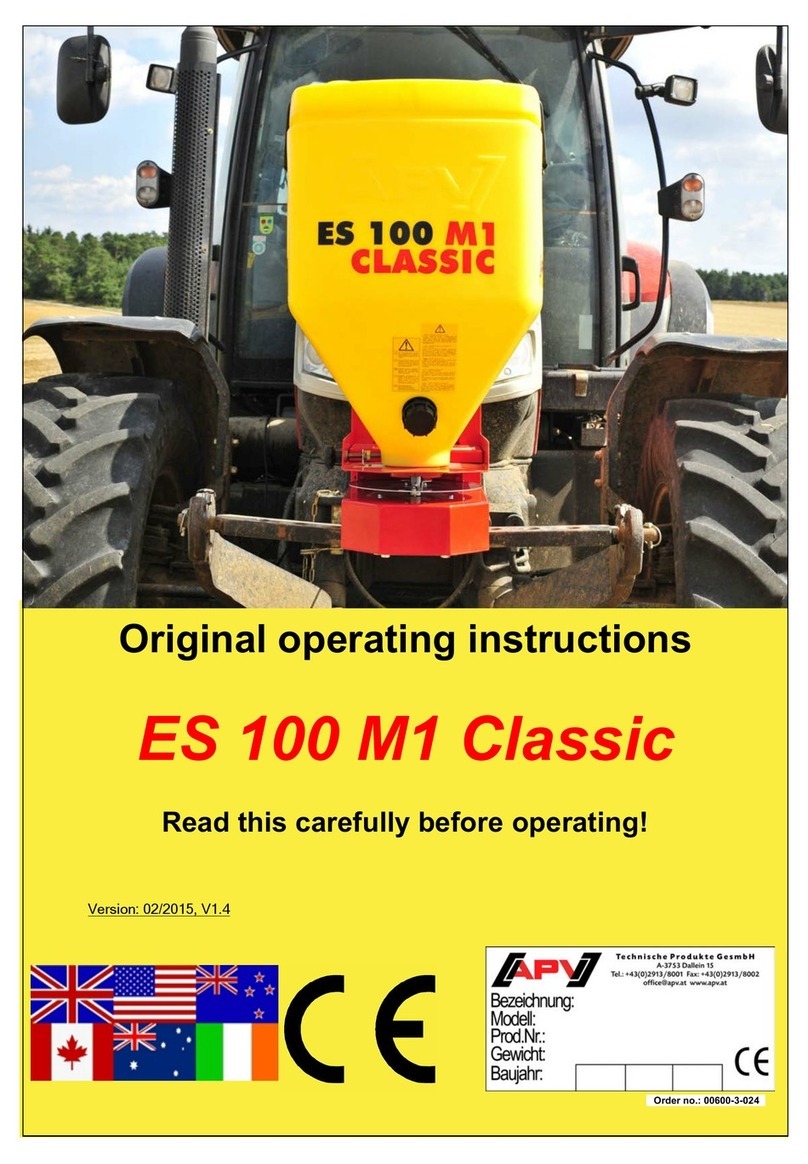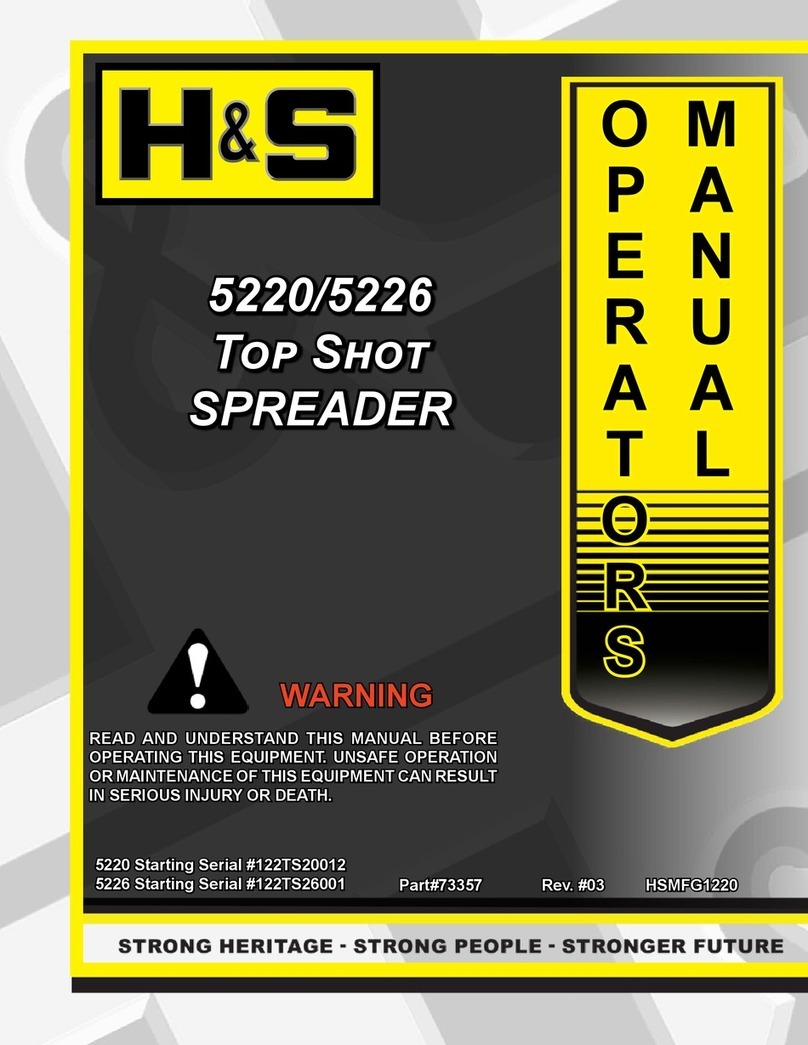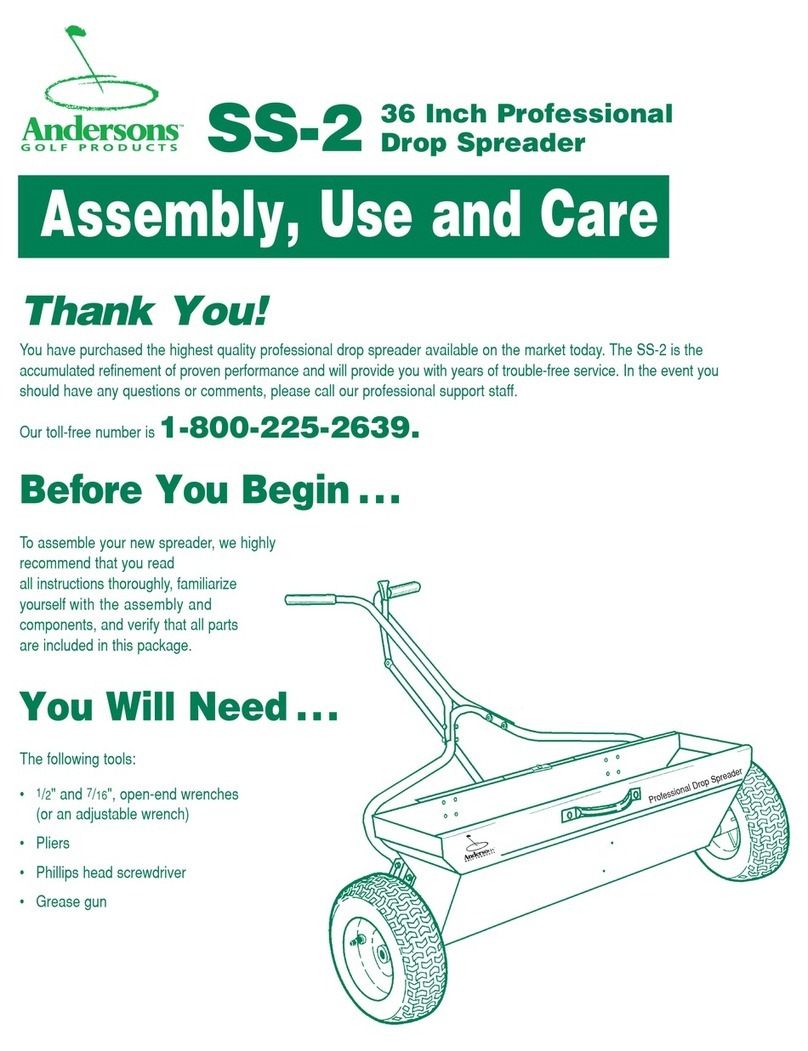
Sand spreader 2023 1
CONTENTS
1. FOREWORD ........................................................................................................................................ 4
Warning symbols used in this manual ...................................................................................................................................5
2. DESIGNED PURPOSE OF USE.......................................................................................................... 6
3. SAFETY INSTRUCTIONS FOR USING THE ATTACHMENT...................................................... 7
3.1 Personal protective equipment...............................................................................................................................9
3.2 Safe shutdown procedure ........................................................................................................................................9
4. TECHNICAL SPECIFICATIONS ....................................................................................................... 10
4.1 Safety labels and main components of the attachment ....................................................................................11
4.2 Lifting.............................................................................................................................................................................13
5. ATTACHING THE ATTACHMENT ................................................................................................. 14
5.1 Connecting and disconnecting hydraulic hoses..................................................................................................16
5.2 Electric connection ....................................................................................................................................................17
5.2.1 To connect the electric harness of the attachment to the loader........................................................17
6. OPERATING THE ATTACHMENT .................................................................................................. 19
6.1 Safety distance.............................................................................................................................................................20
6.2 Checks before use .....................................................................................................................................................21
6.3 Operator qualification...............................................................................................................................................21
6.4 Operating the sand spreader ..................................................................................................................................22
6.4.1 Adjustments ........................................................................................................................................................23
6.4.2 Filling the Sand spreader ..................................................................................................................................24
6.4.3 Transport position.............................................................................................................................................25
6.4.4 Material handling ................................................................................................................................................26
6.5 Options.........................................................................................................................................................................27
6.5.1 Protective cover.................................................................................................................................................27
6.5.2 Electric spreading adjustment.........................................................................................................................28
6.6 Storing the attachment .............................................................................................................................................30
6.6.1 Short term storage............................................................................................................................................30
6.6.2 Long term storage .............................................................................................................................................31
6.7 Working on uneven ground ....................................................................................................................................31
6.8 Operation with a tilt adapter ..................................................................................................................................31
7. MAINTENANCE AND SERVICE ....................................................................................................... 32
7.1 Inspection of hydraulic components .....................................................................................................................32
7.2 Cleaning the attachment...........................................................................................................................................33
7.3 Inspection of metal structures................................................................................................................................33
7.4 Lubrication ...................................................................................................................................................................33
7.4.1 Chain .....................................................................................................................................................................34
7.5 End of life disposal......................................................................................................................................................34
8. WARRANTY TERMS .......................................................................................................................... 35






